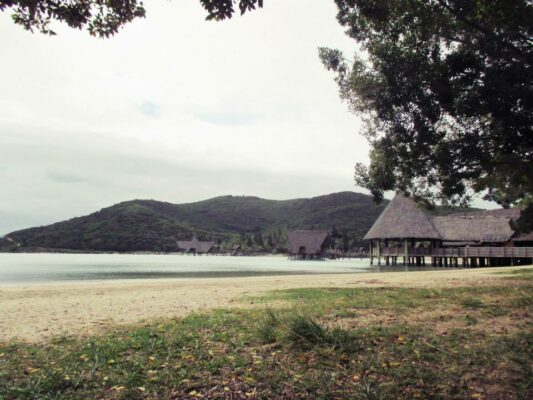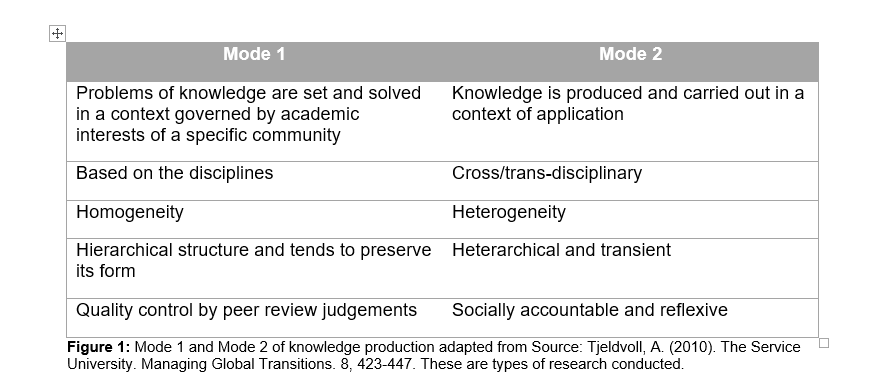The development of a transdisciplinary framework for sustainable and integrated ocean development in the Pacific

Is only traditional research considered as transdisciplinary or can modern research also add towards transdisciplinarity? Credit: Payal Maharaj

Exploring integrated management
The calls echoing from the UN and other global actors for more transformative ocean governance invariably revolve around integrated routes to sustainability. Agenda 2030 sets out this trajectory and provides a set of targets in the SDGs for progressing this transformative change. However, integration is a complex and arduous task, it challenges norms and can be contested or constrained by sector-based institutions and their champions. Moreover, the instruments by which we can achieve integration, namely, multidisciplinary, interdisciplinary and transdisciplinary approaches, remain more mythical than practical.
With the global emergence of the importance of integrated and transdisciplinary approaches, and the vitalness of the ocean to Pacific Island states, we decided to look for transdisciplinarity in relation to ocean sustainable development in the South Pacific. With this question in mind Ms Payal Maharaj and Prof. Jeremy Hills from the University of the South Pacific (USP) began our search to understand what constitutes transdisciplinarity.
Our investigative path, however wandered and roamed. In fact, like many other explorers of frontiers we never found a “perfect answer”. However, what we did find was where transdisciplinarity was most likely to be, what characteristics we would expect to be around it and where it certainly was not present. Eventually we combined clues and indications to map a landscape or seascape, so that we now know more about where transdisciplinarity is most likely to be.
Framing transdisciplinary approaches
A gyre of questions swirled through our minds for days weeks and months, including: How would one design research to promote transdisciplinarity? Who needs to be involved in transdisciplinary approaches? How would one design adopt transdisciplinarity in project investment led by development partners? What design features of project investment would lead to transdisciplinary outcomes? We dug beneath piles of literature and it became apparent that most research ranged between two fundamental modes of research: named Mode 1 and Mode 2. What exactly are these modes and which one has a transdisciplinary nature?
Mode 1 produces knowledge in the sciences through scientific findings, as a largely academically inclined operation from a relatively homogenous set of practitioners. This implies a structured model of communication and consensus but within a narrow constituency. There tend to be vast disciplinary boundaries and Mode 1 outcomes are primarily cognitive as demonstrated in true science led laboratory research. This mode does tend not to aspire towards transdisciplinary.
On the other hand, Mode 2 is carried out in a context of application, it has an inherently transdisciplinary nature (yet it does not represent transdisciplinarity as a whole) and is more heterarchical and transient. Mode 2 is socially accountable and flexible, hence has a heterogeneous set of practitioners, assembling a diverse range of specialists which solve problems in the multidimensions of complexity. Knowledge produced is mainly heterogenous and a greater sensitivity to the impact of research is adopted which collectively brings about new and emerging norms which may create new challenges as well. Mode 2 has an evolving framework to guide complex problems which ultimately distributes knowledge among communities, academia, government, NGOs and private sectors and hence communication is key. In a nutshell, Mode 2 has problem solving capacity “on the go”.

Now that we understood the Modes of research better, our investigation took a deeper dive into the design features for each of the Modes. Based on the Transdisciplinary Workshop (held in Suva, Fiji from 10-12 February, 2020) and critical analysis of the literature, we came up with the People, Policy, Processes and Products or the 4Ps Framework to categorise the key areas of interest in the transdisciplinarity frame. For each of the Ps, a suite of indicators were systematically gathered from published literature.
Applying transdisciplinary audits
We then applied the 4Ps Framework to selected ocean development projects which were already completed in the South Pacific, based on their design features. Preliminary application of the 4Ps Framework, demonstrated that we are able to clearly identify differences in the design features for transdisciplinarity between projects. Based on this, we believe we are in a position to audit and identify research approaches and project designs which promote integrated solutions. The results of the 4Ps Framework will be published soon, so keep that curiosity alive and we will soon be able to share the detail of our work with you!
So why is it important to know if a research initiative or project has design features of transdisciplinarity? A simple answer is, if we need integrated solutions, then we need to build in design features to promote transdisciplinarity. Projects which have transdisciplinarity inculcate a broader constituency and are more capable of solving a complex problems and could help to maintain a balance with the traditional and non-traditional ways of conducting research.
For the Pacific, transdisciplinarity has close links to relational hermeneutics and holism which is strongly integrated into the labyrinth of nature, inclusive of every living being and unifying the different channels into one organ system capable of solving its complex problems. There is an innate sense of respect and everyone’s perspective is treated as important and the strength of the solution is directly proportionate to the diversity available in the group. At first we thought, that apart from Mode 1 and Mode 2 there were transdisciplinarity elements which perhaps belonged to a different Mode all together, we even termed it Mode 3 for the Pacific. However, we still remain uncertain as to whether the Pacific has an array of different attributes beyond Mode 1 and 2, or we are not seeing generality beyond cultural translucency.
Action agenda for integrated ocean management
This work leads us to being more confident in starting to answer the echoes for more integrated ocean management. Through literature review and practical application of our 4Ps framework, we feel we can recognise what suite of design features promote, or constrain, integrated approaches. The design features cover the domains of our 4Ps framework of the people involved, the policies established, the processes followed and the outcomes produced. We have demonstrated its application as an transdisciplinarity audit tool through successfully applying the approach retrospectively to a number of ocean sustainable development projects.
Although our approach is yet to be refined, and although we did not find the exact definition of transdisciplinarity, we know better where we can expect transdisciplinarity to be. For the first time, we can now respond to calls for more integrated management with justified emergent design properties which promote transdisciplinary ways forward. Explicit, proactive embedding of facilitatory design features for transdisciplinary science in programmes such as UN Decade of Ocean Science and other ocean-related investments by development partners may yet meet the echoing calls for “transformation”.